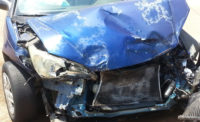The National Transportation Safety Board issued a Safety Recommendation Report as part of its ongoing investigation of the fatal, March 23, 2018, crash of a Tesla in Mountain View, California.
In its report the NTSB issued a safety recommendation to the California State Transportation Agency calling upon the organization to develop and implement a corrective action plan that guarantees timely repair of traffic safety hardware and includes performance measures to track state agency compliance with repair timelines.
While the probable cause of the crash has not yet been determined, the NTSB’s investigation has identified systemic problems within the California Department of Transportation that negatively affect the timely repair of traffic safety hardware.
“Rather than wait to complete all facets of this crash investigation, we have moved ahead with issuing this safety recommendation report in the interest of motorists’ safety,” said Robert Molloy, Director of the NTSB’s Office of Highway Safety. “Our review of Caltrans maintenance records identified examples of delayed repair of the crash attenuator at this location, including one damaged in January 2017 that was not repaired until April 2017.”
The issue of timely repair of traffic safety hardware is not new. The NTSB identified problems with the California Department of Transportation maintenance program during the investigation of the fatal, Jan. 19, 2016, crash involving a motorcoach that collided with a crash attenuator on US-101 in San Jose, California. In that case, the attenuator had been damaged in a crash 44 days prior to the motorcoach crash. In those 44 days, a retroreflective marker was not replaced, and that missing marker contributed to the motorcoach crash.
In the Mountain View crash, the 38-year-old driver of the 2017 Tesla Model X P100D died from blunt force trauma injuries he suffered when, at a speed of about 71 mph, the vehicle struck a non-operational SCI SmartCushion® 100GM crash attenuator on US Highway 101. The car then rotated counterclockwise, and subsequently collided with two other vehicles. The crash attenuator was at the end of a concrete median barrier in the gore area (a triangular-shaped boundary created by white lines marking an area of pavement formed by the convergence or divergence of a main travel lane and an exit or entrance lane). The attenuator, a device intended to protect motorists by reducing collision forces, was not operational, having been damaged due to a March 12, 2018, crash – 11 days before the fatal Tesla crash.
The crash happened when the Tesla approached the paved gore area that divides the main travel lanes of US-101 from the State Route 85 left exit ramp. The Tesla moved left and entered the gore area and struck the non-operational crash attenuator. The Tesla’s driver was using Traffic Aware Cruise Control and Autosteer (a lane-keeping assist system) which are features of the Advanced Driver Assistance System Tesla calls “Autopilot.”
The Tesla’s high-voltage battery was breached during the collision sequence and a post-crash fire ensued. The driver was removed from the vehicle by bystanders before the car was engulfed in fire.
The NTSB’s ongoing investigation of this crash will, when complete, state the probable cause and will discuss any role the Tesla’s advanced driver assistance system may have had in the crash. The breach of the lithium-ion battery and post-crash fire will be addressed in a separate report. The final report for this crash, and a safety report on electric vehicles are forecast to be completed in the first or second quarter of calendar year 2020.
The recommendation issued in Monday’s report is to the California State Transportation Agency, the state agency that provides oversight for the California Department of Transportation and the California Highway Patrol, making it the most appropriate recipient for this recommendation.


